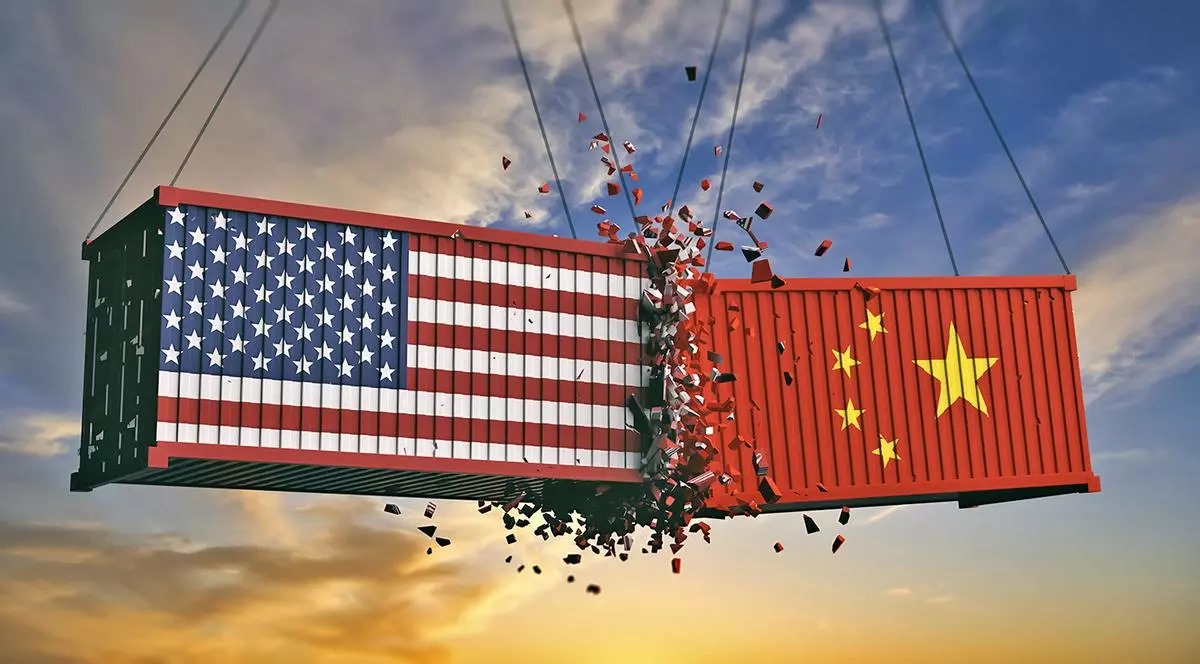Read Time: 5 mins

Introduction
The US-China trade war has emerged as one of the most consequential global economic events of the 21st century. Originating from escalating tensions between the world’s two largest economies—over issues such as trade imbalances, intellectual property disputes, and technology transfer policies—this trade conflict has disrupted markets and economies globally.
For importers, e-commerce entrepreneurs, small business owners, and economists, understanding the ripple effects of this trade war isn’t merely academic; it’s a business imperative. This blog takes you deep into the origins, immediate effects, and long-term implications on global exports, providing actionable insights for how businesses can adapt and thrive in a reshaped trade landscape.
1. Background of the US-China Trade War
The US-China trade war officially began in 2018 when the United States, under President Donald Trump, imposed tariffs on Chinese imports. The justification for these tariffs included China’s trade practices, intellectual property theft, and a massive trade imbalance.
Key Events Leading to the Trade War
• March 2018 – The US imposes tariffs on $50 billion worth of Chinese goods.
• July 2018 – China retaliates with tariffs on US goods of equal value.
• 2019 – Both countries impose further rounds of tariffs, escalating the dispute.
• January 2020 – The Phase One Trade Deal is signed, pausing the tariff escalation but leaving many core issues unresolved.
Overview of the Tariffs
• The US imposed tariffs on over $360 billion worth of Chinese products, ranging from electronics to clothing.
• China responded with duties on approximately $110 billion worth of American goods, particularly targeting agricultural products.
Trade Negotiations and Outcomes
While the Phase One agreement required China to increase its purchases of US goods, many analysts observed that this goal was not fully met. Meanwhile, tariff reductions remained minimal, leaving businesses and economies grappling with the fallout.
2. Immediate Effects on Global Trade
Decline in US-China Trade Volumes
The China-US trade war caused a significant drop in bilateral trade. For instance, US exports to China in industries like agriculture and tech took a substantial hit, while imports from China faced slowing demand due to the added costs of tariffs.
Shifts in Global Trade Patterns
Countries like Vietnam, Malaysia, and Mexico began to emerge as alternative manufacturing hubs as businesses sought to bypass tariffs. This redirection of trade flowed into global export routes, seniorly impacting economies dependent on trade with China and the US.
Market Reactions
Industries such as semiconductors and soybeans faced volatility in global markets. Trade tensions led to heightened uncertainty, causing businesses worldwide to reconsider their supply chain strategies.
3. Impact on Specific Sectors
Agriculture
• The US agriculture sector was one of the hardest hit, with Chinese tariffs slashing exports of soybeans, pork, and other staples.
• Redirection of Chinese agricultural imports to countries like Brazil deepened the disruption in global agricultural supply chains.
Technology
Tech exports, particularly semiconductors, faced headwinds as US-imposed restrictions limited technology transfers to Chinese firms like Huawei. The reshuffling of global tech supply chains increased production costs and delayed new product development.
Manufacturing
Manufacturers dependent on US-China trade began to feel the squeeze from tariffs, costlier raw materials, and redirected supply chains. Many businesses relocated operations to Southeast Asia to mitigate the rising costs associated with the trade conflict.
4. Changes in Global Supply Chains
Realignment of Supply Chains
Supply chain diversification became critical during the trade war. Many multinational companies, including Apple and Dell, began shifting operations to countries like Vietnam and India, reducing dependency on China.
Growth of Emerging Markets
Emerging market economies such as those in Southeast Asia gained a competitive advantage as companies redirected investments. Nations like Vietnam became key players in textile and electronics manufacturing.
Impact on Logistics and Shipping
The trade war reshaped global shipping and logistics industries. There was a notable increase in demand for alternative trade routes, placing pressure on ports and infrastructure in regions outside of China.
5. Long-term Economic Implications
Shift in Global Economic Power
The China-US trade war accelerated discussion about a potential shift in global economic power. China’s “dual circulation” strategy aims to reduce reliance on international markets, potentially signaling a long-term shift toward self-reliance.
Trade Agreements and Alliances
The ripple effect of the trade war extended to international trade policies, with countries investing in new alliances and agreements. The Regional Comprehensive Economic Partnership (RCEP), spearheaded in Asia, hinted at a future less dominated by Western trade agreements.
Predicted Trends in Global Trade
• Increased investment in domestic manufacturing to reduce reliance on foreign markets.
• Further diversification of supply chains to mitigate risks from geopolitical tensions.
6. Strategies for Businesses to Adapt
Navigating a post-US-China trade war world requires businesses to stay informed and agile. Here are some strategies to mitigate impacts and seize emerging opportunities.
Diversify Export Markets
Businesses must explore new export opportunities beyond the US and China. Expanding operations into emerging markets can reduce dependency on any single economy.
Invest in Technology
Automation, AI, and data-driven decision-making tools can improve efficiency and lower costs, allowing companies to weather trade disruptions effectively.
Explore Regional Free Trade Agreements
Participating in free trade agreements, like the RCEP or USMCA, can open doors to new markets and competitive advantages.
Strengthen Supply Chain Resilience
Identifying alternative suppliers and logistical routes can ensure minimal disruption during economic or geopolitical crises.
Preparing Your Business for a Changing Trade Landscape
The US-China trade war has profoundly impacted global exports, supply chains, and entire industries. From reshuffling trade routes to creating new opportunities in emerging markets, the aftershocks of this economic conflict continue to shape the future of global trade.
Businesses that stay ahead of these shifts—by diversifying markets, strengthening supply chains, and investing in innovation—will be better positioned to thrive in this era of uncertainty.
